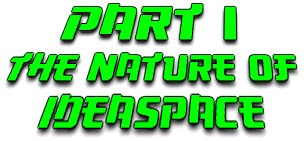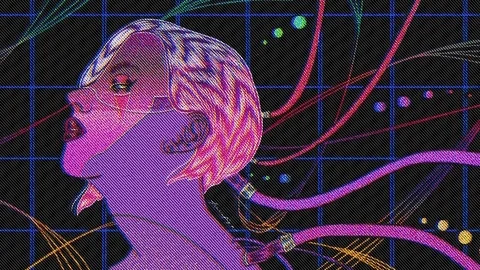



Here, we delve into the fascinating concept of Ideaspace, a shared mental landscape where all ideas exist and can be accessed by anyone. We will explore the origins and definition of Ideaspace, examining how it functions as a collective mental ecosystem that transcends individual thought. By understanding the nature of Ideaspace, we can begin to appreciate the interconnectedness of ideas and the collaborative potential they hold. This section will also provide historical perspectives on shared ideas, drawing parallels between ancient and modern philosophies on collective thought and presenting case studies of simultaneous discoveries and inventions. Through this exploration, we aim to lay the groundwork for reimagining intellectual property in a way that fosters creativity, collaboration, and innovation.
Chapter 1: Understanding Ideaspace
Before we utilize Ideaspace, we first need to understand the concept.
Definition and Origins of Ideaspace
Ideaspace, a concept introduced by Alan Moore, represents a metaphysical realm where all ideas exist and can be accessed by anyone. This theory challenges the traditional notion of intellectual property by suggesting that ideas are not isolated entities owned by individuals or corporations, but part of a shared mental landscape. Moore, a renowned writer and magician, first articulated the concept of Ideaspace in the late 20th century, drawing inspiration from various philosophical and metaphysical traditions.
The origins of Ideaspace can be traced back to Moore's exploration of the collective unconscious, a concept developed by Carl Jung in the early 20th century. Jung's theory posits that there is a part of the unconscious mind shared by all humans, containing archetypes and universal symbols. Moore expanded on this idea, envisioning a mental ecosystem where ideas could be freely exchanged and accessed by anyone. This shared mental landscape, or Ideaspace, functions as a repository of human thought and creativity, transcending individual ownership.
Ideaspace also draws parallels with the concept of the noosphere, introduced by the French philosopher Pierre Teilhard de Chardin in the 1920s. The noosphere represents the sphere of human thought, encompassing all intellectual and cultural activities. Like Ideaspace, the noosphere suggests that ideas are part of a collective consciousness, accessible to all. Moore's Ideaspace theory builds on these earlier concepts, proposing a more dynamic and interactive mental landscape where ideas can be freely shared and developed.
In addition to philosophical influences, Moore's Ideaspace theory is also informed by his experiences as a writer and magician. Moore has often described his creative process as tapping into a larger pool of ideas, drawing inspiration from a shared mental landscape. This perspective challenges the traditional view of creativity as a solitary endeavor, instead highlighting the collaborative and interconnected nature of human thought. By understanding the origins and definition of Ideaspace, we can begin to appreciate the potential for a more inclusive and innovative intellectual property framework.
How Ideaspace Functions as a Shared Mental Ecosystem
Ideaspace operates as a shared mental ecosystem where ideas exist independently of individual ownership and can be accessed by anyone. This concept challenges the traditional view of intellectual property, which often emphasizes exclusive rights and control over creative works. In Ideaspace, ideas are seen as part of a collective consciousness, constantly evolving and interacting with one another. This interconnectedness allows for a dynamic exchange of thoughts and innovations, fostering a collaborative environment where creativity can thrive.
Alan Moore's Ideaspace theory suggests that this shared mental landscape functions much like an ecosystem in nature. Just as plants and animals interact within a biological ecosystem, ideas in Ideaspace influence and shape each other. This interaction leads to the growth and development of new concepts, as individuals draw inspiration from the collective pool of knowledge. By tapping into Ideaspace, creators can access a vast reservoir of ideas, enabling them to build upon existing concepts and contribute to the ongoing evolution of human thought.
One of the key aspects of Ideaspace is the notion that anyone can access it through various forms of creative expression. Moore, who is both a writer and a magician, believes that activities such as writing, art, and speaking can serve as gateways to Ideaspace. He views these creative acts as forms of magic, capable of bridging the gap between the individual mind and the collective consciousness. By engaging in these practices, individuals can tap into the shared mental landscape, drawing inspiration and insights from the collective pool of ideas.
Moore's perspective on creativity as a form of magic is deeply rooted in his experiences as a writer. He often describes his creative process as a form of ritual, where he enters a trance-like state to access Ideaspace. This approach allows him to connect with the collective consciousness, drawing upon the wealth of ideas that exist within it. By viewing creativity as a magical act, Moore emphasizes the transformative power of art and its ability to transcend individual limitations.
In addition to writing and art, Moore also highlights the importance of speaking and storytelling as means of accessing Ideaspace. He believes that oral traditions and the spoken word have a unique ability to convey ideas and connect individuals to the collective consciousness. Through storytelling, individuals can share their insights and experiences, contributing to the ongoing evolution of Ideaspace. This communal aspect of creativity underscores the importance of collaboration and the interconnectedness of human thought.
By understanding how Ideaspace functions as a shared mental ecosystem, we can begin to appreciate the potential for a more inclusive and innovative intellectual property framework. This perspective encourages us to move beyond the restrictive boundaries of traditional IP laws and embrace a more collaborative approach to creativity. By tapping into Ideaspace, we can foster an environment where ideas can flow freely, inspiring innovations and contributing to the collective progress of society.
Page 002

